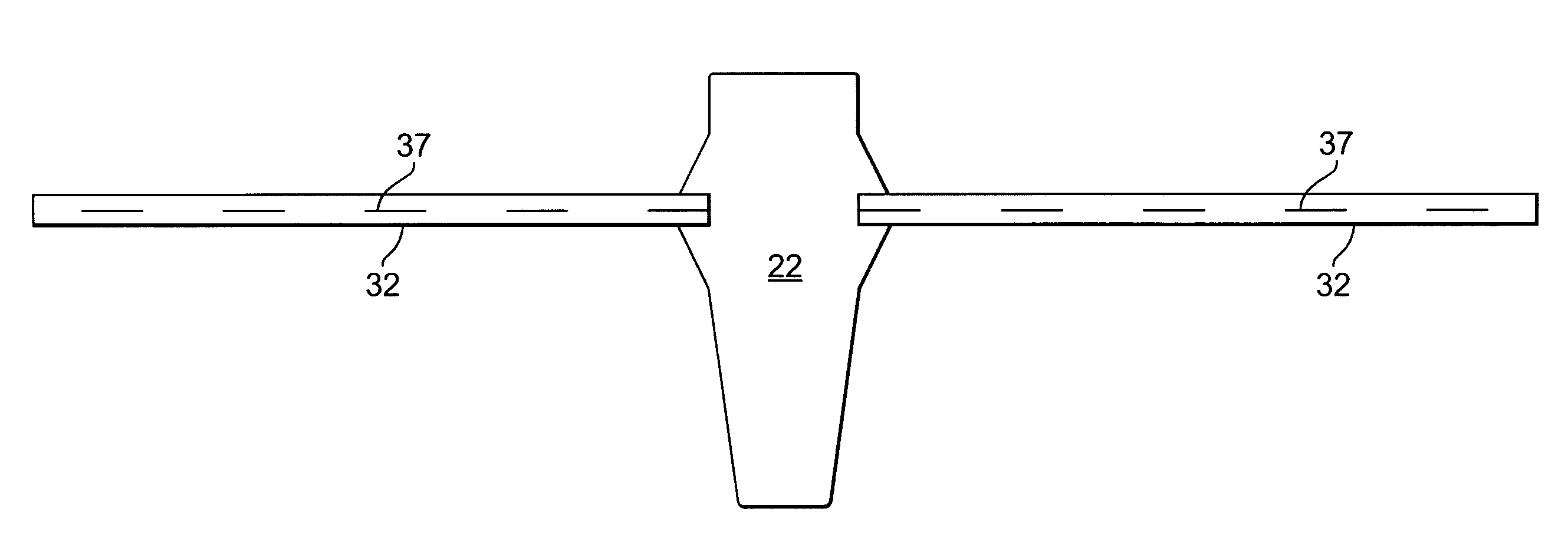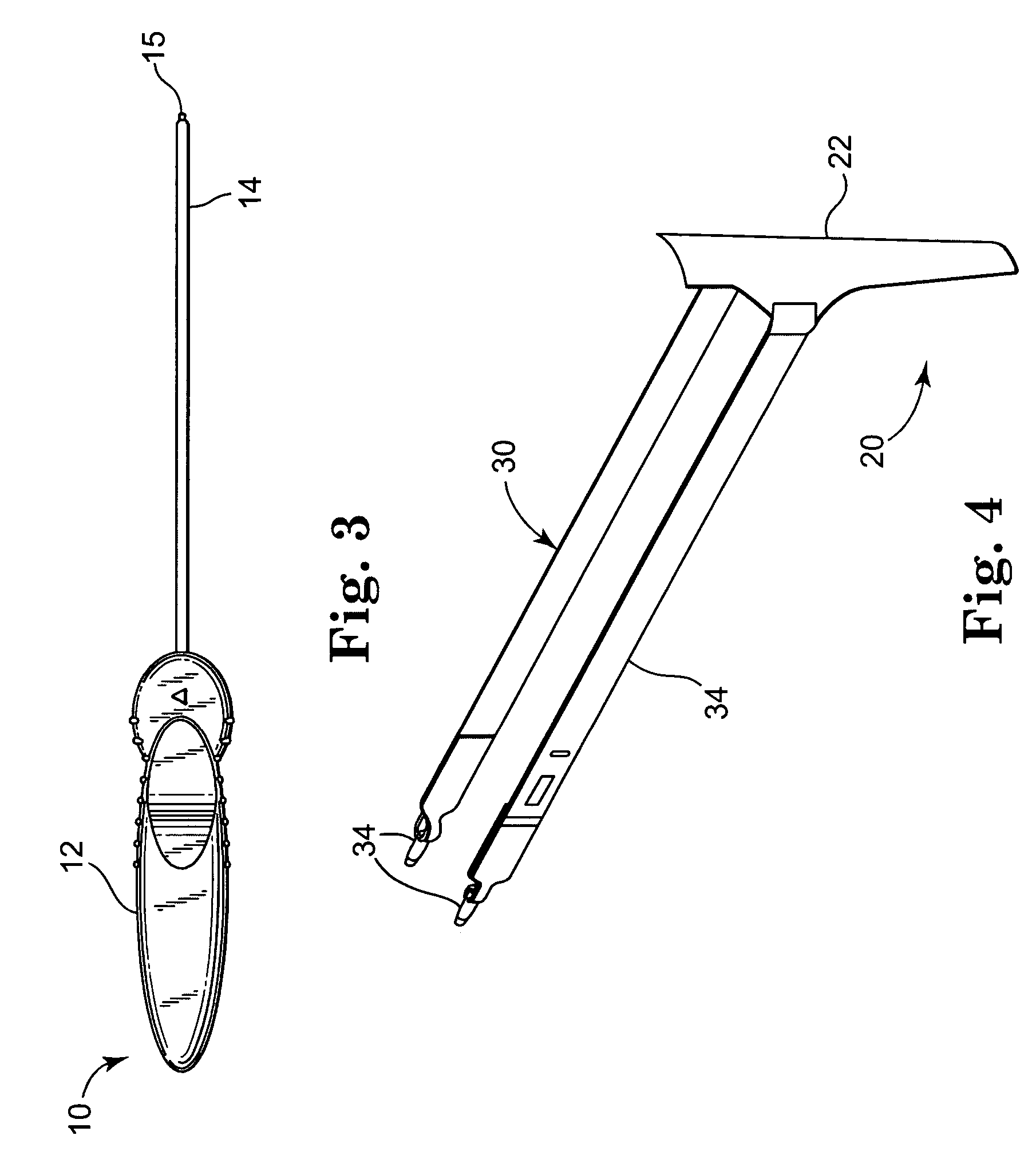Female genital prolapse has long plagued women.
With the increasing age of the U.S.
population, these problems will likely assume additional importance.
In addition, if a woman has a
hysterectomy, the vaginal angle may be altered, causing increased pressure at a more
acute angle, accelerating the prolapse.
The common clinical symptoms of vaginal prolapse are related to the fact that, following
hysterectomy, the
vagina is inappropriately serving the role of a structural layer between intra-abdominal pressure and
atmospheric pressure.
This pressure differential puts tension on the supporting structures of the
vagina, causing a “dragging feeling” where the tissues connect to the pelvic wall or a sacral backache due to traction on the uterosacral ligaments.
Vaginal prolapse may also result in loss of urethral support due to displacement of the normal structural relationship, resulting in stress
urinary incontinence.
Certain disruptions of the normal structural relationships can result in
urinary retention, as well.
Stretching of the bladder base is associated with vaginal prolapse and can result in complaints of increased
urinary urgency and frequency.
There may also be a transverse defect, causing cystecele across the vagina.
They may occur because of failure to reapproximate the superior aspects of the pubocervical fascia and the rectovaginal fascia at the time of
surgery.
Mid-vaginal and high rectoceles may result from loss of lateral supports or defects in the rectovaginal septum.
As noted, vaginal prolapse and the concomitant anterior cystocele can lead to discomfort,
urinary incontinence, and incomplete emptying of the bladder.
Posterior vaginal prolapse may additionally cause defecatory problems, such as tenesmus and
constipation.
Vaginal pessaries are the primary type of nonsurgical treatment, but there can be complications due to vaginal wall ulceration.
In addition, it is often required to correct multiple pelvic floor abnormalities simultaneously, further increasing surgical time.
This procedure requires specialized skills and has the further
disadvantage of tending to place the vagina in an artificial anatomical position.
Interestingly, relief of
pelvic organ prolapse often results in incontinence in the patient.
Although serious complications associated with sling procedures are infrequent, they do occur.
Complications associated with the TVT procedure and other known sling procedures include injury to blood vessels of the pelvic sidewall and
abdominal wall, hematomas,
urinary retention, and bladder and bowel injury due to passage of large needles.
One serious
disadvantage of the TVT procedure, particularly for surgeons unfamiliar with the surgical method, is the lack of information concerning the precise location of the needle tip relative to adjacent pelvic
anatomy.
If the needle tip is allowed to accidentally pass across the surface of any
blood vessel, lymphatic duct, nerve,
nerve bundle or organ, serious complications can arise.
Additional problems are associated with the TVT and other sling procedures.
However, the
smooth surface of the needles, which facilitates
insertion through the tissues, prevents secure attachment of the
forceps onto the needles, causing slippage or detachment of the
forceps during the withdrawal procedure.
Improper placement of the TVT mesh is also particularly troublesome.
If the mesh is too loosely associated with its intended physiological environment, the mesh may be ineffective in supporting the
urethra and treating incontinence.
Several complications can arise from a mesh that is too tightly placed including retention, sling
erosion and other damage to surrounding tissue such as the
urethra and vagina.
Surgeons may exacerbate these problems by improperly attempting to adjust the tension of a sling.
If insufficient adjustment force is applied, the sling will simply exhibit a memory property and return to its original, unacceptable position.
As a result, surgeons are tempted to use a great deal of force in order to loosen a sling that is perceived to be too tightly associated with its intended physiological environment.
Excessive deformation may result in a lack of
efficacy or, even worse, the edges of the mesh may curl up and present a relatively sharp, frayed surface.
In this curled or deformed state, the edges of the TVT mesh present sharp surfaces that can readily abrade or otherwise damage adjacent tissue such as the
urethra, bladder or vagina.
The problems associated with the TVT mesh device are commonly seen in other similar sling or synthetic
implant devices.
This tube passes through two separate regions of the patient's body with the attendant risk of cross-
contamination.
This tape is not believed to be optimally sized and shaped to afford concomitant procedures such as enterocele, cystocele, and or rectocele repairs.
The tape is also largely inextensible.
Such inextensibility is believed to be associated with higher risk of tissue
erosion and failure.
 Login to View More
Login to View More  Login to View More
Login to View More 


